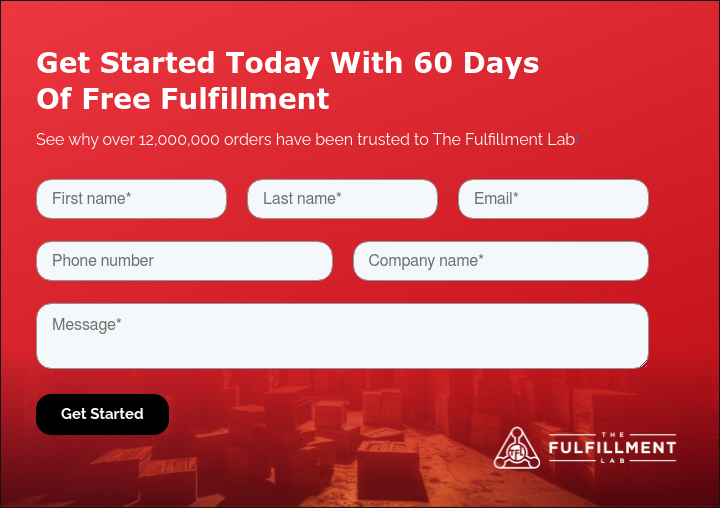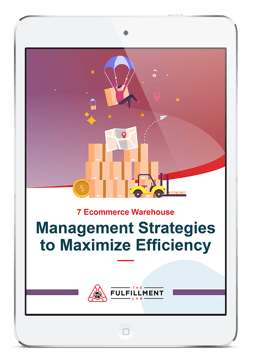Warehouse Costs for eCommerce: How Much Should You Spend?
There comes a time in the life of most e-commerce businesses when inventory storage becomes an issue. To manage these growing pains, most ecommerce businesses turn to warehouse facilities. Of course, warehouse services come in many sizes, and as such, warehouse costs can vary wildly.
It can be daunting to understand how much to spend on warehousing services. Is it simply storage you’re looking for? Do you need shipping and fulfillment services included? Do you want to manage a warehouse yourself? And, how will you manage distribution in multiple geographical locations?
“Before you can determine how much to spend on warehousing, you first have to know what your warehousing needs are and what benefits they can provide to your business. Warehousing services aren’t just about storing inventory, they’re integral to optimizing nearly every aspect of your business.”
Rick Nelson, Founder and CEO, The Fulfillment Lab
It’s clear that warehousing is a complex part of any business that sells goods and several factors need to be considered when determining an appropriate amount to spend on warehouse related services. Let’s take a further look at this.
Components of Basic Warehouse Costs
Calculating warehouse expenses is not as difficult as it may seem at first, despite acronyms seemingly designed to confuse renters. To determine your monthly or annual cost, you need three numbers:
- The amount of warehouse space you need (in square feet).
- The base rental rate (monthly or annually).
- The estimated operating expenses (these may be referred to as Triple Nets (NNN), Net Net Net (NNN) or Common Area Maintenance (CAM) fees). This generally includes property taxes, property insurance, and common area maintenance costs (such as cleaning or repair costs).
How Much Does it Cost to Rent a Warehouse?
Now that you know what you’ll need to determine warehouse storage costs, let’s calculate some monthly and yearly costs based on some average warehouse costs per square foot and the average costs of NNN/CAM. For space you’re renting, let’s assume 5,000 square feet.
- Space: $.67 per square foot per month, $8 per square foot per year
- NNN/CAM: $.33 per square foot per month, $4 per square foot per year
The table below shows how much the average warehousing costs a company can expect to pay for 5000 square feet of space per month and per year.
|
Calculation Period |
Space Needed (SF) |
Rental Rate |
NNN/CAM Rate |
Total Cost |
|
Monthly |
5,000 |
$.67 per month |
$.33 per month |
$5,000 per month |
|
Yearly |
5,000 |
$8.00 per year |
$4.00 per year |
$60,000 per year |
Note: In this example, you’ll notice that if you rent monthly, you’ll pay the same as a yearly rental. That’s often not the case; most landlords will offer you discounted warehouse rent costs if you choose to pay annually.
Additional Warehouse Rental Costs
Those calculations weren’t so bad, right? Of course, it’s only fair to warn you that there could be a few other warehouse expenses you may need to cover. This includes:
- Electric (generally $1-2 per square foot per year).
- Janitorial (generally $1-2 per square foot per year, if you want it).
- HVAC maintenance (generally $500-1000 per year; otherwise, the landlord may require that you hire a third-party HVAC technician).
Buying Warehouse Space: How Much Do Warehouses Cost?
Perhaps you’re thinking a better route would be to invest in warehouse space—purchasing it rather than renting it. While there are certainly some advantages to purchasing a warehouse, such as equity-building, there are also a lot of risks involved, which is why generally only very large, well-established companies purchase warehouse space.
More often than not, ecommerce companies outsource their warehousing needs to a third-party logistics provider who handles everything from inventory management, kitting and fulfillment, shipping logistics, and even security.
If you choose to buy warehouse space, there’s further warehousing fees to consider. You’ll have to pay high upfront costs to purchase the facility and set it up, which many small- and medium-sized businesses simply can’t afford. Even if the capital is available, this money might be better spent on growing the business.
In addition, you’ll bear the full burden of the facilities maintenance needs, security, staffing, and utility costs, further cutting into your finances and your time. Ultimately, unless you’re one of the kings of e-commerce like Amazon or Target, renting or outsourcing your warehouse needs is probably in your best interest.
Cut the Time it Takes to ShipReduce packaging and shipping costs—all with The Fulfillment Lab’s warehouse kitting services.
|
Consider Fulfillment Centers: A Better Option to Lower Warehouse Costs
There’s an alternative to basic warehousing that you may also be interested in, especially if you’re looking for more than just storage: fulfillment centers. A fulfillment center is a 3PL provider that typically stores fast-moving products that are frequently shipped out. Their job is to get products to customers or end-users as quickly as possible.
Fulfillment services work with retailers, e-commerce companies, corporations, and others to fulfill both B2B and B2C orders, shipping goods to end-users. People work, often around the clock, to process, pack, label, and ship orders to customers. (And that’s not even mentioning the advantages of kitting in the warehouse space.)
There’s also incoming inventory and customer returns to manage. To ensure a smooth process, good fulfillment centers are outfitted with the best technology for processing orders, managing inventory, organizing transportation, and more.
8 Benefits of 3PL Warehousing Providers For eCommerce
Giving your business a solid foundation to grow from is crucial for succeeding in the ever increasingly competitive ecommerce world. Using a 3PL provider for warehousing services is a great way to avoid over-investing in infrastructure and ensure you always have room to grow.
Eight ways 3PL warehouse services can help ecommerce companies thrive include:
Scalability: Fulfillment centers allow businesses to scale their operations up or down without the need for significant capital investment in warehousing space, equipment, and staff. This flexibility is particularly beneficial for businesses experiencing seasonal fluctuations or rapid growth.
Cost Efficiency: Outsourcing warehousing and distribution can be more cost-effective than managing these operations in-house. Fulfillment centers benefit from economies of scale, which can lead to lower storage and shipping costs for the businesses that rely on them.
Expertise and Technology: Fulfillment centers specialize in logistics and have the expertise and technology to optimize warehousing and distribution processes. This includes inventory management, order processing, and shipping, which can improve efficiency and accuracy.
|
Other articles we think you’ll find helpful: |
Faster Shipping Times: Many fulfillment centers have strategically located warehouses, which can help businesses offer faster shipping times to their customers. This is crucial for customer satisfaction and competitiveness in markets where quick delivery is a key differentiator.
Focus on Core Competencies: By outsourcing warehousing and distribution, businesses can focus on their core competencies, such as product development, marketing, and sales. This can lead to better use of resources and faster growth.
Reduced Risk: Managing warehousing and distribution in-house involves significant risks, including inventory loss, damage, and fluctuations in demand. Fulfillment centers can help mitigate these risks through professional management, security measures, and flexible scaling options.
Access to International Markets: Fulfillment centers often have experience and infrastructure to support international shipping, making it easier for businesses to expand their reach to new markets without the need for a physical presence in those countries.
Improved Customer Service: Many fulfillment centers offer additional services such as personalized package services, handling returns, which can improve the overall customer experience. They may also provide real-time inventory and delivery tracking, enhancing transparency for both the business and its customers.
Manage Warehouse Costs Easily with The Fulfillment Lab
If a fulfillment center sounds like the ideal arrangement for your business, work with the best in the business: The Fulfillment Lab. Our fulfillment services include:
- Reliable global fulfillment and eCommerce fulfillment
- 14 total fulfillment centers (2 domestic and 12 international) for faster deliveries
- Warehouse kitting services so you never have to worry about putting together product
- Expedited shipping options with delivery guaranteed in 3 days or less
- End-to-end visibility throughout our entire fulfillment process
- Proprietary, easy to use fulfillment software
- Customized packaging for limitless branding potential
- Dynamic integration with every major ecommerce system
- No storage fees for rotated inventory
Contact us today to learn how we can help grow your brand and your business!





